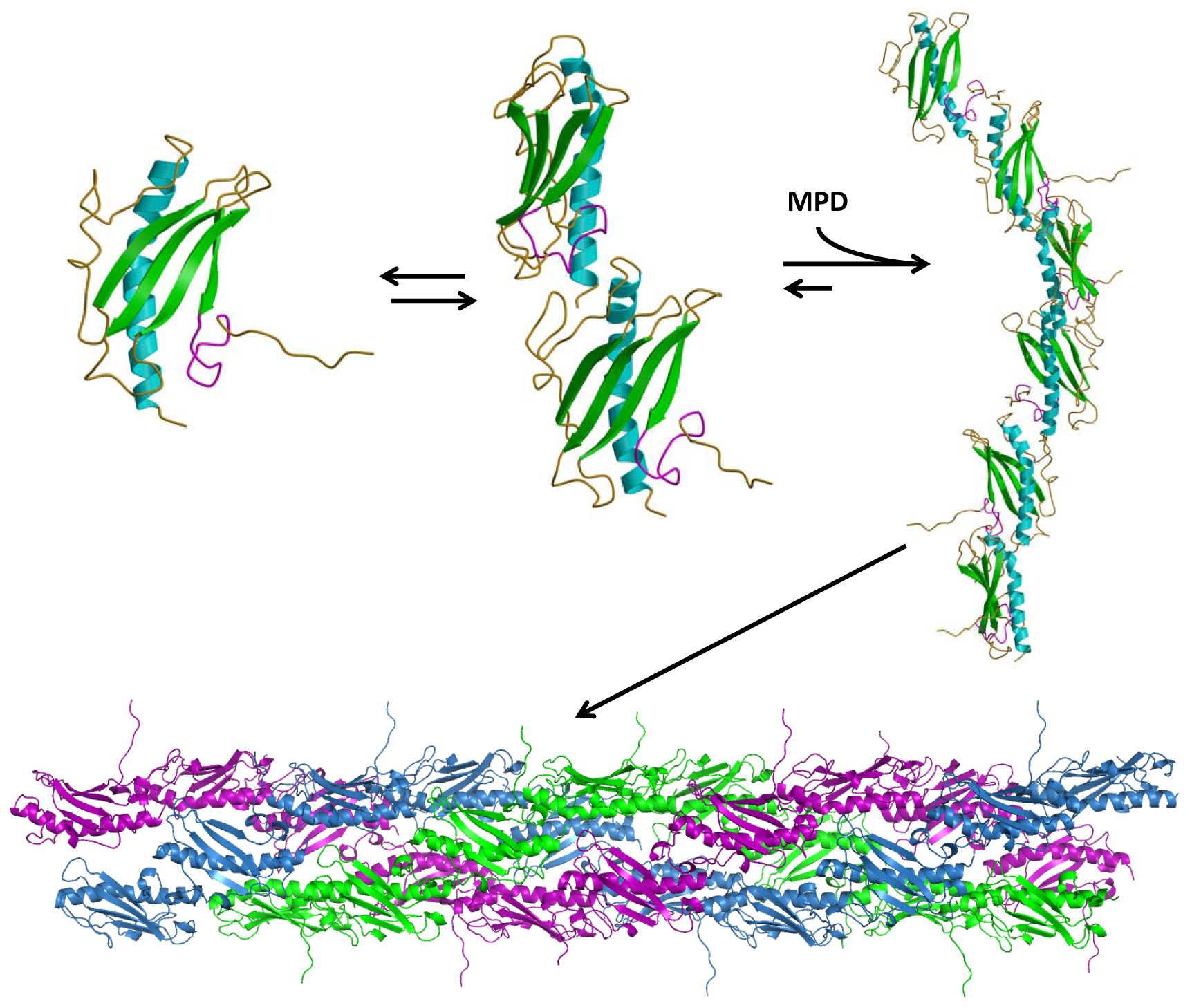Research
Pilin-derived Protein Nanotubes
Many bacterial species, including Pseudomonas aeruginosa, utilize a type II secretion system to assemble the type IV pilus (T4P). Bacteria such as P. aeruginosa use T4P, which are fibrous assemblies of pilin monomers, during the initial stages of infection to attach to host cells. We have shown that a highly soluble engineered pilins from P. aeruginosa can oligomerize in solution (Audette et al. Nano Lett. 4(10), 1897-1902 (2004)) and at surfaces (Lombardo et al. J. Bionanosci.3(1), 61-65 (2009)). The structures derived from these engineered pilins are in effect protein nanotubes (PNTs), and are interesting targets for bionanotechnolgy applications such as biosensors.
We are currently focusing on understanding the mechanisms of how PNTs oligomerize from the monomeric protein precursor, and are investigating the development of these novel PNTs through protein engineering. For example, what are the kinetic parameters of PNT formation? We have shown that oligomerization of the K122-4 pilin (Petrov et al.J. Nanobiotechnol. 11:24 (2013)) can be induced with a hydrophobic molecule such as MPD (above) in solution. Can we rationally modify the monomeric pilin protein to modify the assembly and kinetics of PNT formation? Also, can we add specific functionality to either the inside or outside of the PNT through modification of the monomeric protein, or by using them as an adapter technology for a biologically relevant nanomachine? We are continuing to explore these ongoing questions in order to better understand how to control the oligomerization of pilin-derived PNTs for more practical applications.
We are also characterizing the assembly systems and T4P/PNTs from a variety of bacteria, with an aim at a greater understanding of how these structures are assembled, the specific interactions that occur at the binding interface during surface adherence, and the development of pilin-derived PNTs for applications in biosensors. Current pilin/PNT systems under investigation include those from Coxiella burnetii, Francisella tularensis and Burkholderia pseudomalei.
